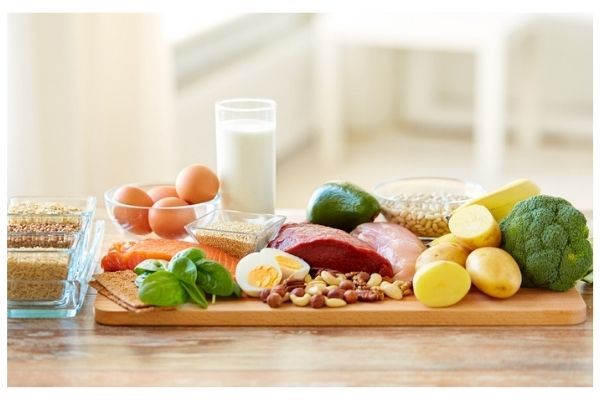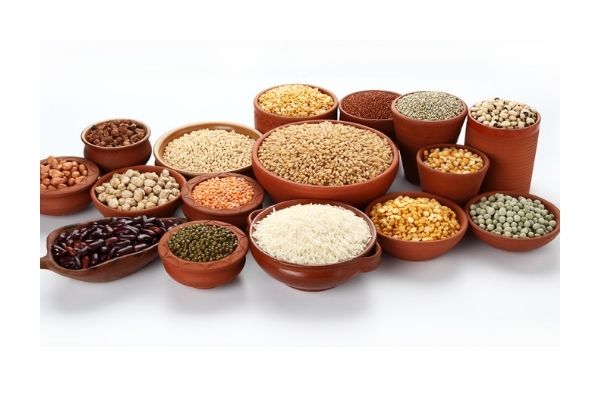If you’re a parent, you know how difficult it is to persuade your picky youngster to drink a glass of flavour-enhanced milk, sneak in nutritious veggies in recipes, and force them to consume fruits or scold them into eating another. The fight isn’t over yet. To keep their bowel motions robust, make sure they drink enough water each day. With so much on their plates (literally!), moms may overlook several nutritious items that should be included in their children’s meals. The nutritional requirements of your child are decoded here!
Dos and Don’ts in Healthy Meals for your Children
A youngster should have four complete meals every day. Fresh fruit juices, probiotic curds, and vegetables in juices and purees should make up the majority of the diet. Chapatis and parathas should be used to round out the meal. The World Health Organization (WHO) has supported and advised the intake of sprouts and beans daily because of their nutritional value and ability to boost immunity.
Include Fruits and Vegetables
Fruits and vegetables are abundant in colourful pigments, water, vitamins, and minerals, as well as fibre, and are low in calories. Every day, a youngster should eat 5 servings of fruits and vegetables.
Give Milk and Dairy Products
Milk and dairy products are high in vitamins A, D, B1, B2, and B12, as well as minerals, notably calcium. For children and teenagers, this is especially essential. Borrowing from the bones is limited and daily calcium demands are addressed during infancy and adolescence to create a proper bone balance.
Add more Grains
Grains are an important element of a balanced diet because they provide nutrients and energy that are necessary for a child’s appropriate growth and development. Bread, cereals, rice, pasta, noodles, and oats must all have a wide selection of whole grains and/or high fibre types. Grains such as refined grain (cereal) food products with high levels of added sugar, oil (especially saturated fats), and/or salt/sodium, such as cakes and biscuits, should be avoided.
Include Meat and Beans
Meat, poultry, fish, beans, peas, eggs, nuts, and seeds are high in nutrients and essential for a balanced diet. These foods have a lot of protein. Proteins are required for several bodily processes; therefore, it is essential to incorporate them into your diet.

Meat is also an excellent source of iron and vitamin B12. Iron deficiency anaemia may be avoided by eating a diet high in iron. This is a frequent ailment in youngsters that causes them to lose energy and seem pale. Soya, beans, eggs, milk, cheese, yoghurt, mushrooms, almonds, and seeds are all vegetarian meat substitutes.
Include Fats and Oils
They are an important component of your child’s or teen’s diet since they aid in the development of the brain, allowing them to achieve their full potential. Fat serves as a fuel source for our bodies and helps in the absorption of fat-soluble vitamins A, D, E, and K.
Fatty meals are frequently linked to obesity, heart disease, and stroke, yet the appropriate fats can bring health advantages to the body. Fish, nuts, avocados, and liquid oils including maize oil, soybean oil, olive oil, and canola oil are all good sources of omega-3 fatty acids.
Sample Meal Plan for Kids
Use the sample meals below as a guideline. Plan meals and snacks for your child at the same time each day so that he or she will be hungry when it is time to eat.

Early morning: A glass of low-fat heated milk
Breakfast: Veggie egg omelette with onion, tomato, and spinach, whole grain bread pieces, and an apple
Mid-morning: Fruit salad with low-fat strawberry yoghurt
Lunch: Whole grain bun with lean chicken, capsicum, onion, and zucchini stir fry, mango lassi
Evening: A spinach-mushroom-peas cutlet with a handful of almonds and a glass of fresh mixed fruit juice (Apple Guava, lime)
Dinner: Whole multigrain phulkas, dal, and mixed vegetable curry with paneer, peas, and mushrooms.
Bedtime: A glass of warm low-fat milk before bedtime.
This healthy eating plan, when combined with regular physical exercise on most days, can help your children maintain a healthy weight or even begin to lose weight if they are overweight.
Know more about daily home exercises suited for kids.
Things to Avoid from Healthy Diets of Kids
To make the healthy diet plan even more efficient, it may also be beneficial to:
- Avoid flavourings that might make milk less nutritious; for example, chocolate milk or strawberry milk flavouring will often add extra sugar and calories to your child’s milk serving.
- Fried meats, such as chicken nuggets, corn dogs, or fish sticks, should be served no more than once a week.
- High-fat meats, such as sausage, bacon, hot dogs, or bologna, should be served no more than once a week. When you do go out to dine at a restaurant, avoid fast food and select healthier choices.
- Instead of distributing sweets daily, limit candies, cookies, and cakes to special occasions, and instead, give healthful snacks between meals and for dessert.
- Drinks containing a lot of added sugar, such as sweet tea, soda, or fruit punch, as well as fruit drinks that aren’t 100 percent fruit juice, should be avoided by your children.
It’s common for young children to refuse to try new meals. Change their views about things they’ve tried previously. Maintain a consistent schedule for meals and snacks, and incorporate a variety of foods.
Continue to provide meals without putting any pressure on them. You are in charge of deciding what foods are served when they are served, and where they are served. Your child is in charge of whether or not they eat and how much they consume.
At TIST, we encourage healthy food habits, so we prepare foods at our cafeteria under the supervision of school dieticians and trained staff. No carbonated drinks and junk foods are allowed inside our campus. We welcome you to visit our campus and know more about the facilities provided for your little one’s.



